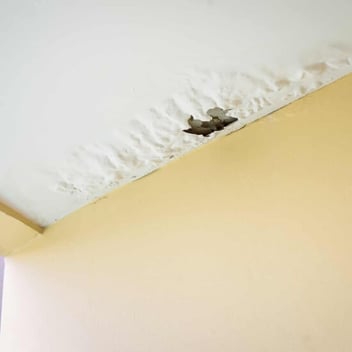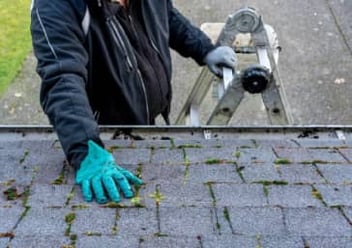- Home »
- Learningcenter »
- Brown spots ceiling cause
Brown Spots on Your Ceiling: Causes, Concerns, and Solutions
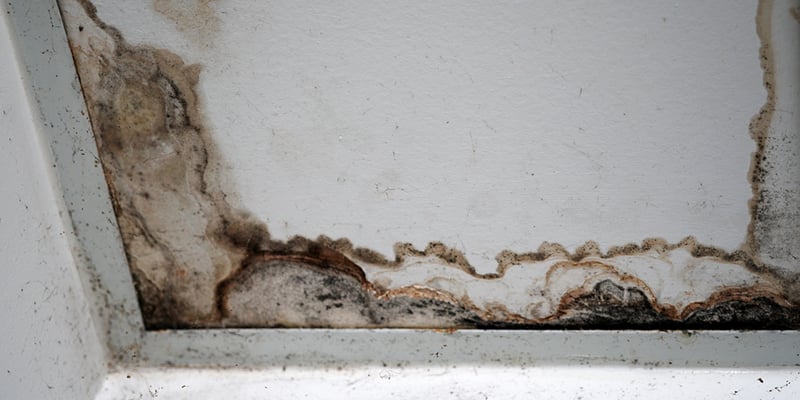
Few things are as disturbing to a homeowner as the appearance of brown spots on the ceiling. Where do they come from, and what should you do about it?
Brown spots typically result from a water intrusion of one kind or another, though the staining could also be mold or cigarette smoke. If you can identify the spots as water stains, you'll want to determine the cause immediately.
Whether water is entering your home through the roof, is leaking from a pipe in your ceilings or walls, or is coming from your HVAC system, solving the problem isn't something you'll want to procrastinate. The longer water is allowed to be where it isn't supposed to be, the more expensive and extensive the repairs will be.
Let's look at what you need to know about the different potential causes of brown spots on the ceiling, why they are so concerning, and what to do about them.
What Can Cause Brown Spots on the Ceiling?
If there are brown spots on your ceiling, it is most likely caused by a leak of some kind. This issue could be because of a plumbing pipe, a problem with your roof, or a heating appliance.
Brown stains appear when water seeps into your ceiling and evaporates, leaving behind discolored deposits.
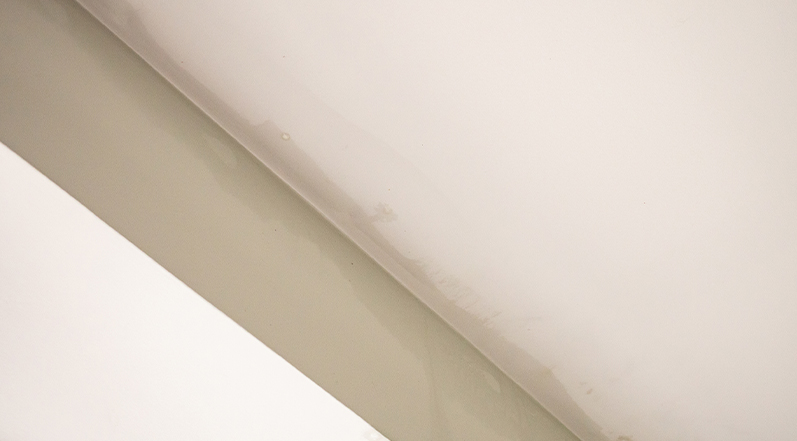
You shouldn't try and cover the brown stain by painting over it, as you aren't solving the root problem. Untreated leaks can lead to electrical and structural damage, which can be expensive and dangerous.
It's also possible that the spots on your ceiling are caused by mold or cigarette smoke, but these stains are typically a different color than water stains.
Let's explore the potential causes of brown spots on your ceiling to help you better understand your issue and how it can be fixed.
1. Flashing Failure
When two areas join together on your roof, pieces of metal known as flashing are installed to prevent water from intruding into these vulnerable areas. For this reason, regularly inspecting flashing and ensuring it remains in good working order is vital.
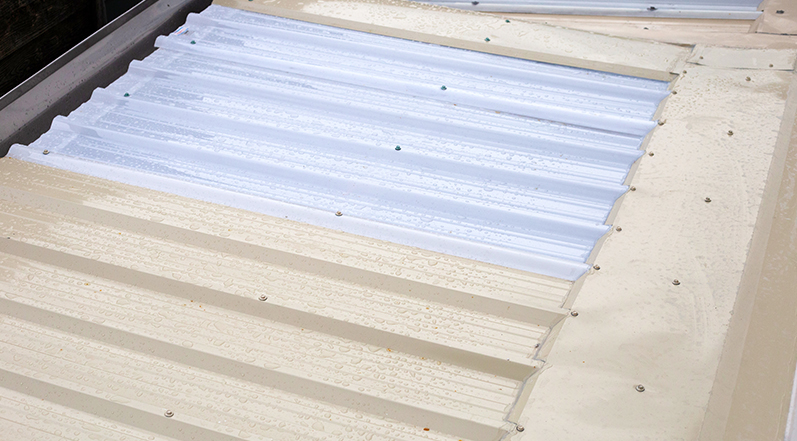
When flashing fails, it means that water might be able to leak through your roof. Often, but not always, you will also see water stains on the ceiling and the walls.
If you're concerned that your roof is leaking but don't know precisely where the water is getting in, you can use this guide which goes over how to locate the source of water penetration.
2. Skylights, Vents, and Chimneys
Any vents, skylights, or chimneys on your roof must be installed properly. When professionals install these the right way, they are watertight. Otherwise, they can leave gaps where water can enter the building or home. Time can take its toll, and you may have to reseal them over time.
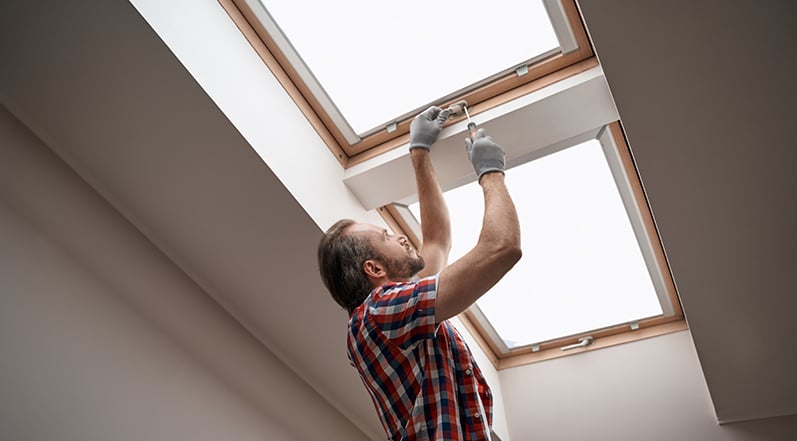
Another vulnerability of skylights is that the insulation surrounding them can deteriorate, eventually allowing water to seep into the home or business. If you believe that the brown stains on your ceiling are coming from nearby skylights, you'll also want to ensure there isn't any damage or cracks to the window itself.
Chimneys can allow water into the home when they aren't maintained properly and deteriorate over time. Some potential causes include holes in the chimney and missing mortar.
3. Damaged or Missing Shingles
If shingles on your roof are damaged or completely missing, your roof is vulnerable to water intrusion. Shingles can crack due to sunlight exposure and wind damage which leaves the underlayment more exposed and increases the likelihood of leaks.
You might also find you are missing some shingles due to falling trees, blowing debris, heavy wind, rain, or hail storms.
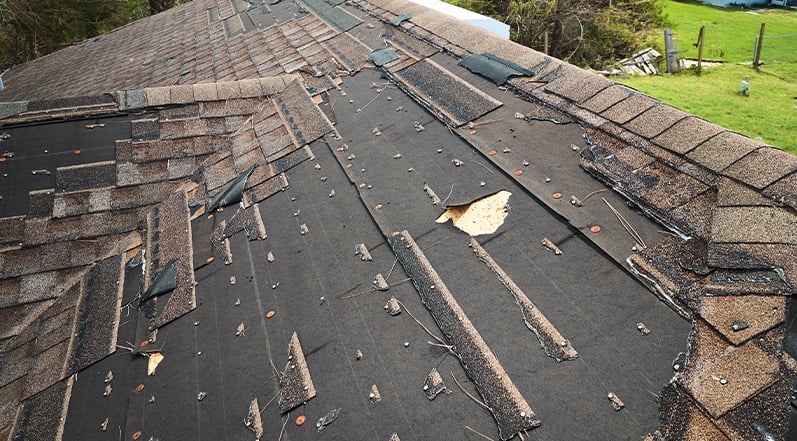
If water can seep through your roof this way, it can end up spreading and causing damage over time.
Are you wondering if it's simply time to replace your old roof or if you should just repair those cracked shingles? If you're unsure whether there has been damage to your roof, you can use this checklist to know what to look for. You can learn more about how to decide between repairing or replacing your roof in this post.
4. Gutter Problems
Another potential cause of brown spots on your ceiling is blocked-up gutters. When fallen leaves and other debris clog up your gutter system, the water that collects in them ends up overflowing onto the roof and under the shingles. This situation can lead to water intrusion and brown spots on the ceiling, indicative of water problems.
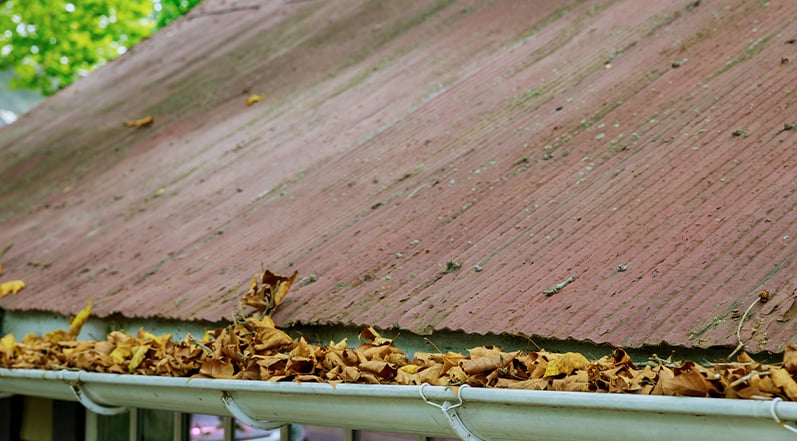
Gutter systems are excellent at collecting and carrying water away from your home when properly designed, installed, and maintained. However, when routine and preventative maintenance isn't regular, they can easily get filled with dirt, sticks, leaves, and falling debris. On top of potentially leading to a leaking roof, clogged gutters can lead to pest problems and end up directing water toward your foundation rather than away from it.
Are you considering replacing your roofs and wondering if you should install a new gutter system simultaneously? If so, read our article about whether it's worth replacing your gutters simultaneously with your roof.
5. Leaking Pipe
It's possible that an issue doesn't cause the brown spots on your ceiling with your roof. Another potential culprit is leaking pipes in ceilings and walls, which drip or leak water until you can visibly see staining on your ceiling or walls.
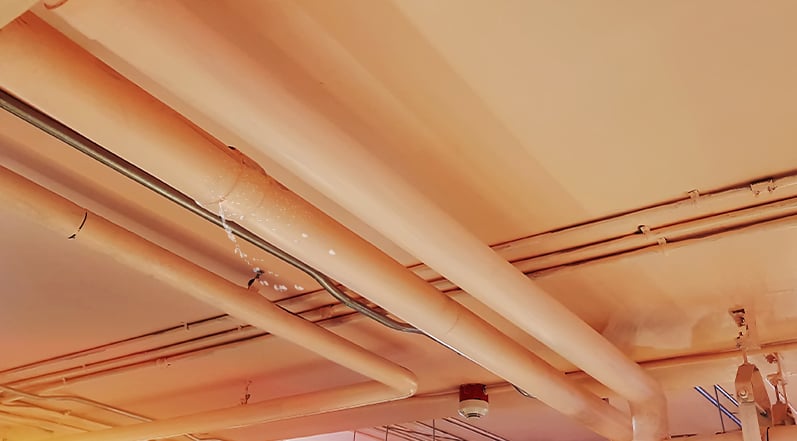
If you've noticed brown spots on the ceiling below a bathroom in your home, that may be where the leak is. Possible culprits include old caulking that needs to be replaced, clogged sinks or drains leading to flooding, or a failed seal of the wax ring between the toilet and drain opening.
6. Attic Condensation
Warm air will drift into your attic when the temperature outside is cooler. When it cools quickly in the uninsulated space, condensation can occur.
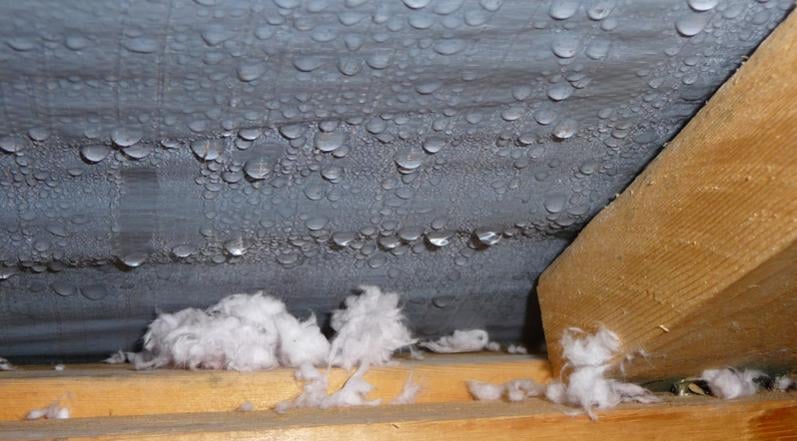
Over time, this condensation can lead to leaking roofs and mold growth if they aren't dealt with promptly.
7. Damaged or Old Waterproofing Membrane Layers
If you notice brown spots on the ceiling in a commercial building, it's also possible that the waterproofing membrane layer of your roof has been damaged; this can occur due to foot traffic, weather, or mechanical damage.
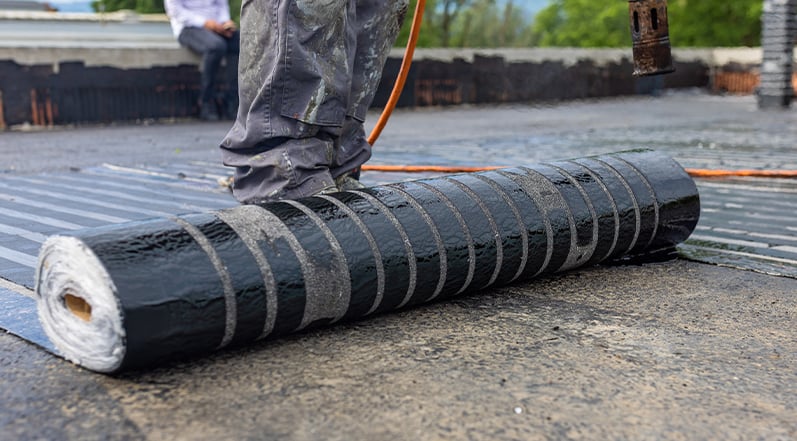
The lifespan of this layer can vary depending on several factors, but the older a roof is, the more likely you are to deal with leaks at one point or another.
If your commercial roof is constructed with the material TPO and you're dealing with brown spots on the ceiling, check out our post about how to repair TPO roofing.
8. Leaking HVAC Units
If there is a leak in an HVAC unit, this can also lead to brown water stains. This situation might occur because the HVAC drip pan is overflowing, the HVAC unit is leaking water, or the unit was installed incorrectly.
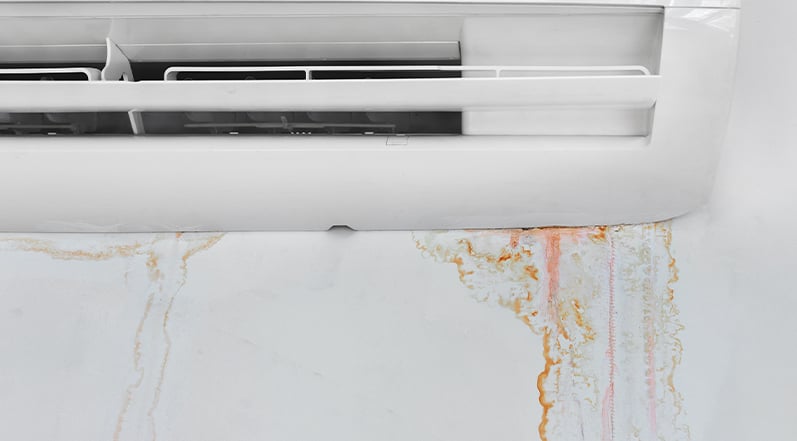
If you have a roof-top HVAC unit, it's also possible that the unit isn't draining correctly, which is the cause of the brown stains on your ceilings.
9. Holes in the Roof
Beyond broken and missing shingles, the water spots could also be potentially caused by an actual hole in your roof. Hail, snow, strong winds, or falling tree limbs can cause this.

The potential for developing a hole in your roof is one of the reasons it's important to perform regular roof inspections. It's best to patch roof spots as soon as you spot them and nip the problem in the bud before it can become a much larger issue.
10. Mold or Cigarette Smoke
In addition to moisture damage, brown spots can also indicate mold growth; this can be caused by poor ventilation in a high-humidity room such as a bathroom, kitchen, or sauna. When moisture isn't able to escape, it condenses. This situation isn't necessarily a problem if this only happens from time to time, as the condensation is given ample time to dry out.

However, if condensation is frequently forming and there isn't adequate time for drying, a mold stain can start to form. Mold on ceilings is usually streaky and spotty in nature and generally more black or green than the type of brown hue that shows up from water damage.
Yellow-brown staining can also appear on a ceiling if people smoke cigarettes indoors. The good news is that a smoke-stained ceiling isn't indicative of a larger water intrusion problem, but the bad news is that it will likely take a lot of cleaning and a fresh coat of paint to fully remove the stain.
What to Do About Brown Spots on the Ceiling
You'll want to act fast when you notice a brown spot on your ceiling. The problem will only get worse with time, and the repair will be simpler and less expensive the sooner you deal with it.
1. Identify the Cause
The first step is identifying why there are brown water spots on your ceiling.
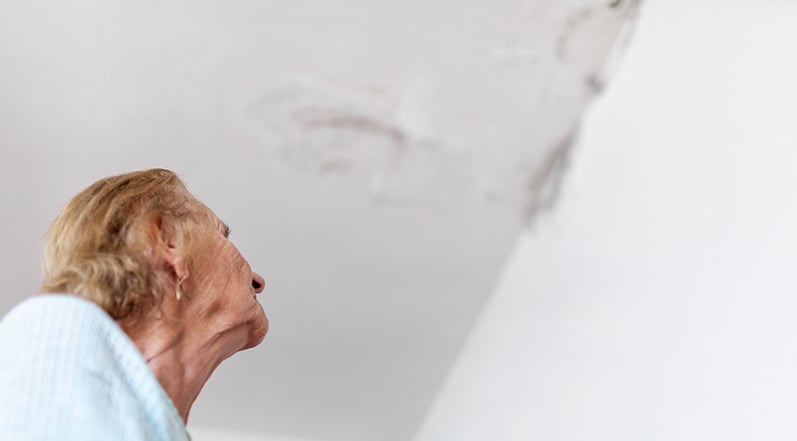
You can't simply clean or paint over the stain– this only buys you a little time until another stain shows up and doesn't in any way prevent additional damage from occurring.
2. Call the Proper Professionals
You'll often want to call in the pros to deal with a water leak. Whether the water is getting in through your roof, a leaking pipe, or your HVAC system, you'll likely want to leave the job to people that specialize in this type of repair.
Of course, if an active leak occurs in your bathroom or from your plumbing, you'll also want to contain the water as much as possible and turn off the water supply to the leaking pipe to prevent the problem from getting worse.
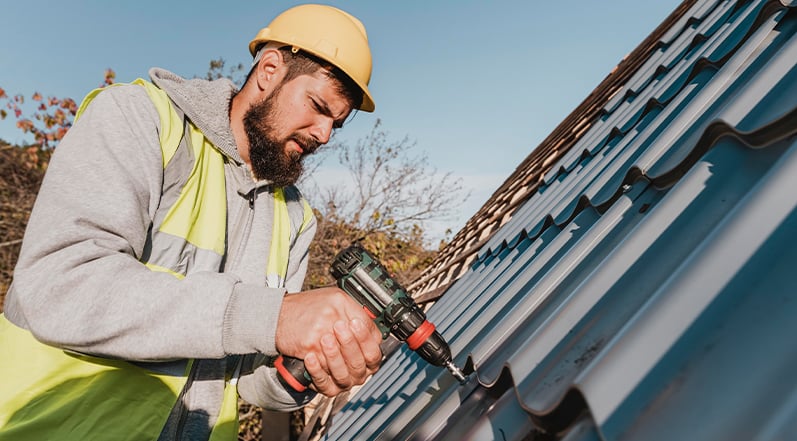
It can be tempting to try and ignore the problem because of the assumption that hiring professionals can be expensive. The truth is, though, that a leaking roof, HVAC system, or pipe will only get worse if it isn't addressed. Roof leak repairs, for instance, can cost anywhere between a few hundred dollars to upwards of $1000. How much the repair will cost usually has to do with how much damage the leak has been allowed to cause and for how long.
If you're going to repair your roof on your own, be sure to check out these roof repair tips that every homeowner should know before you begin.
3. Repair the Affected Spot After the Root Problem Has Been Solved
Once no water is actively causing stains on your ceiling, you'll still be left with an ugly brown spot. Depending on where the spotting is and how handy you are, you can either take on this job yourself or hire it out.
If you are considering going the DIY route, you might choose to use a bleach and water mixture to wipe the stain away and let it dry. Then you can paint over the stain, and your ceiling will look brand new.
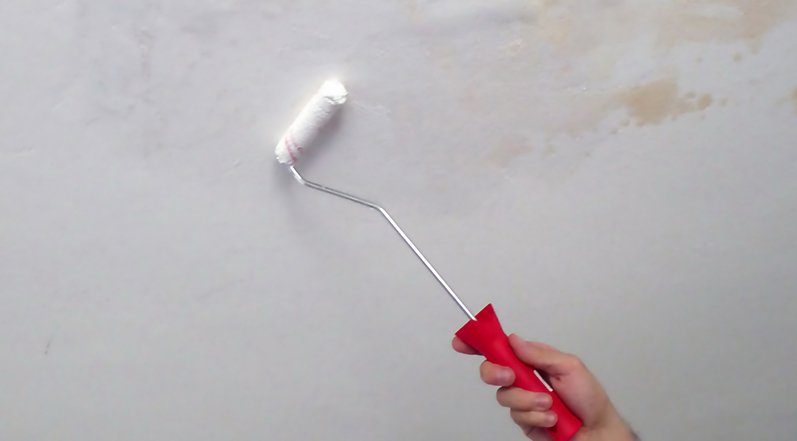
You could also remove the part of the ceiling that was impacted by water stains and replace it with new drywall or ceiling tiles. For wood ceilings with enough depth to afford sanding, you can sand down the affected layer and reseal it.
Looking For Professionals to Repair Your Roof?
No one wants to deal with a leaking roof, but if you're in that predicament, the best thing you can do is deal with it immediately. Over the course of a roof's lifespan, various repairs will likely be necessary.

Look no further than Colony Roofers if you're looking for a professional roofing company in the Atlanta area. A locally owned and operated business, the Colony Roofers team provides affordable roof and repair solutions– not to mention the best customer service. We pride ourselves in hand-selecting our employees for their hard work, experience, and integrity, so you can always rest assured that the job will be done right.
Does that sound good to you? Contact us today for a free estimate and to discuss how we can solve your leaking roof and prevent those brown spots from reappearing.
 Call (678) 365-3138
Call (678) 365-3138

.jpg?width=352&height=352&name=roof%20leaks%20(1).jpg)
